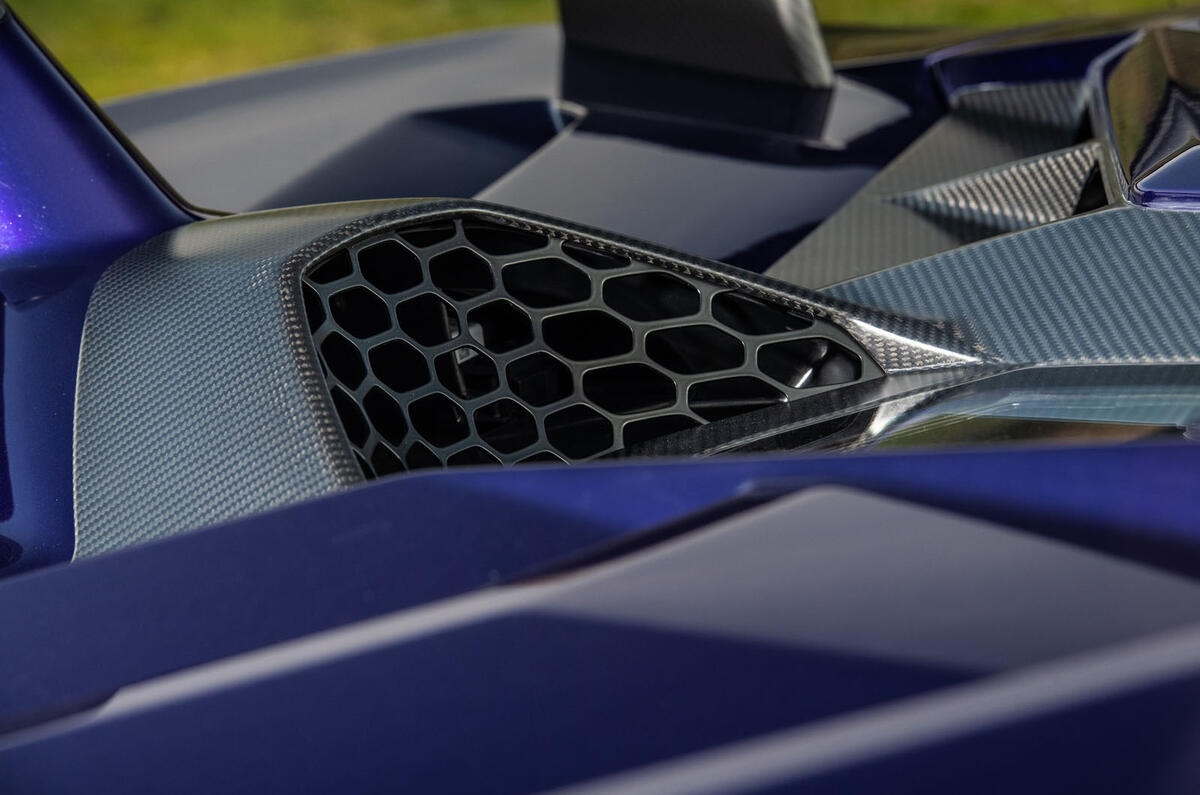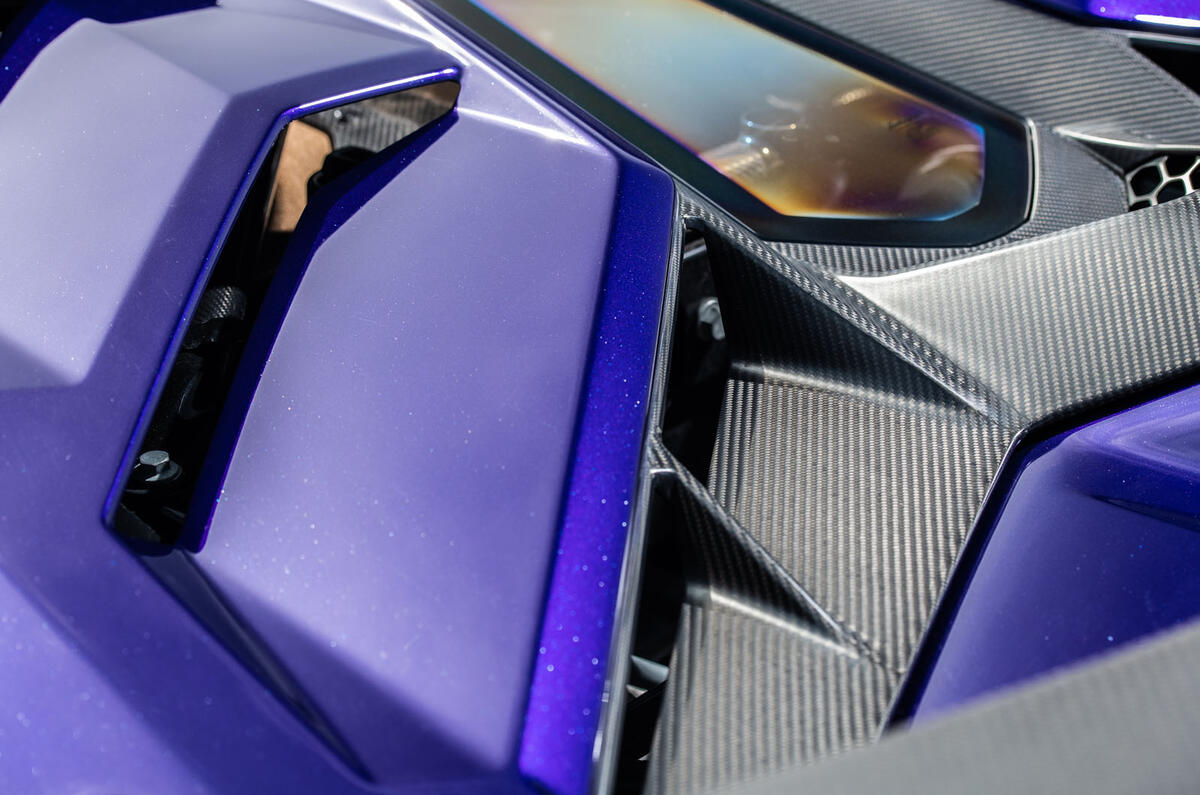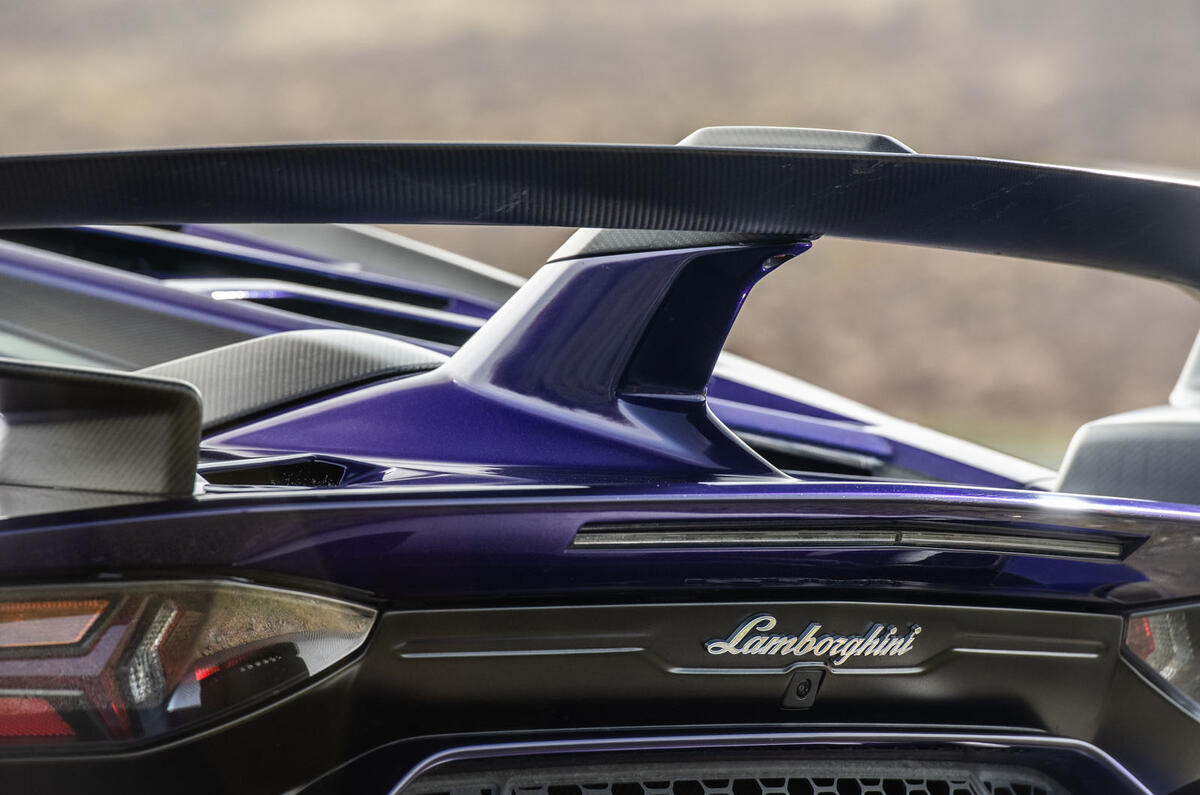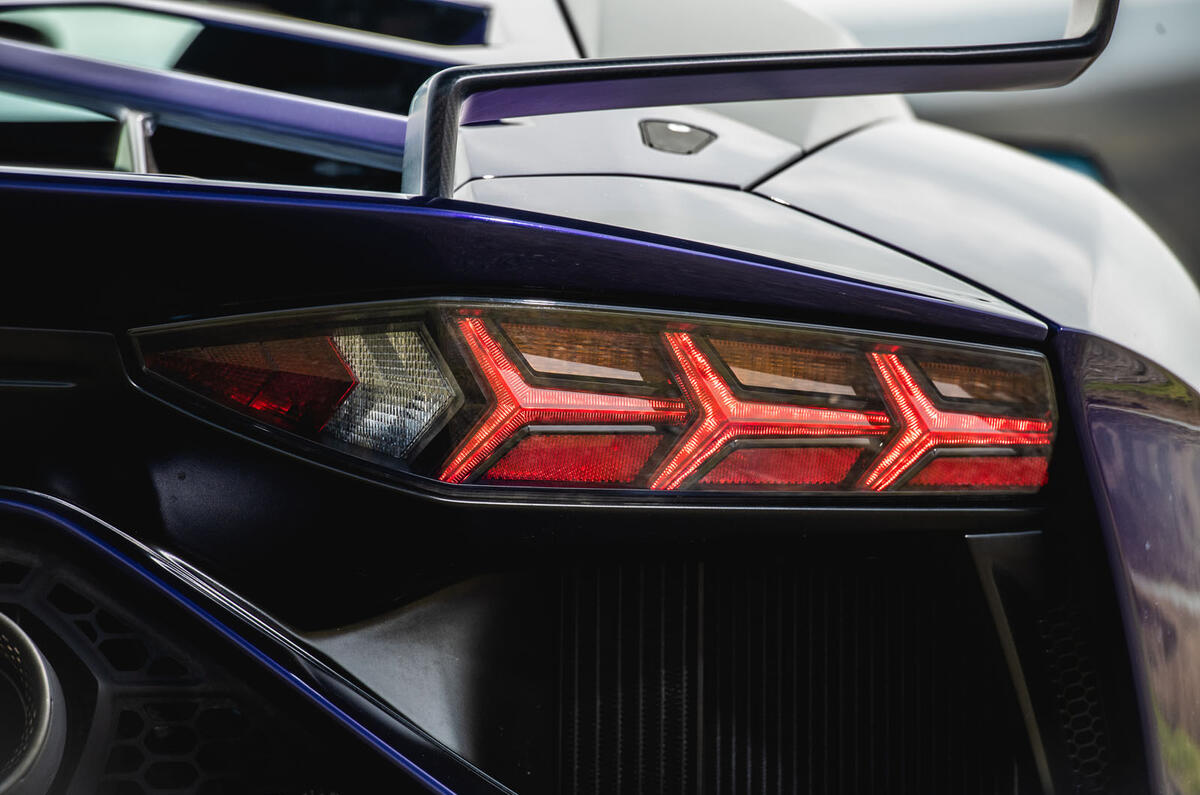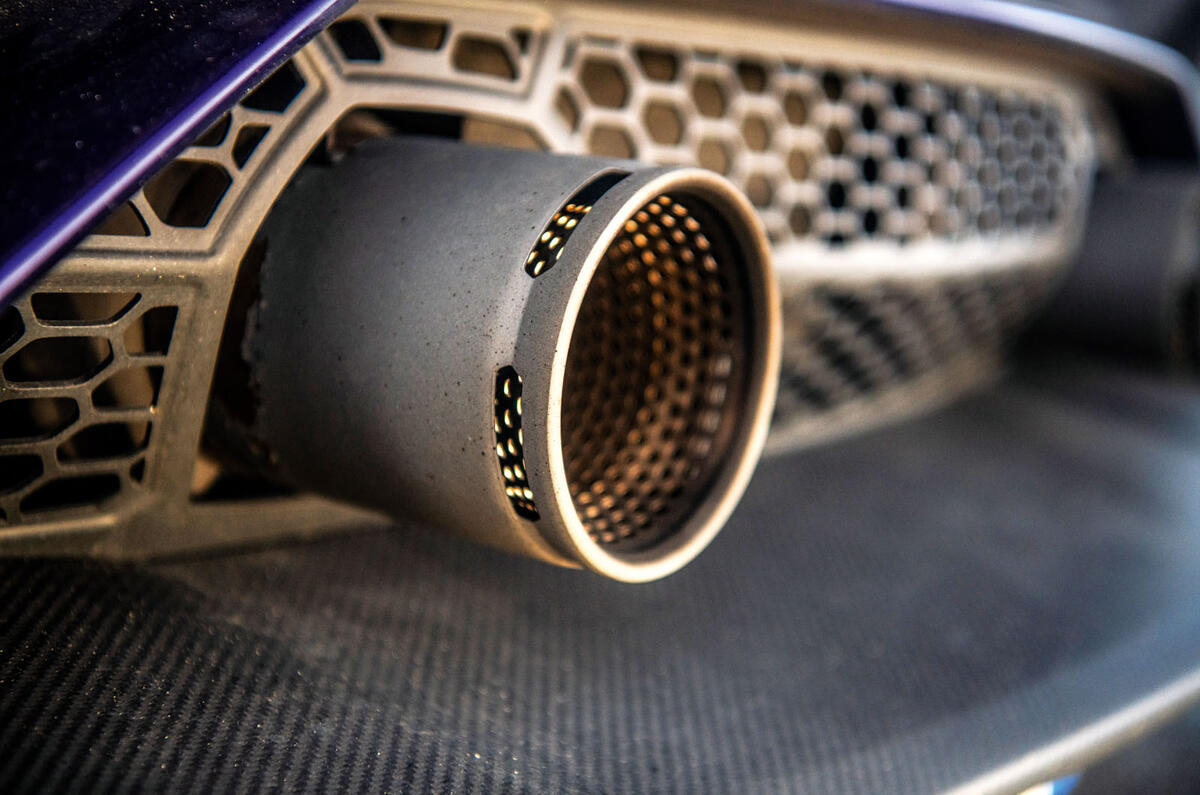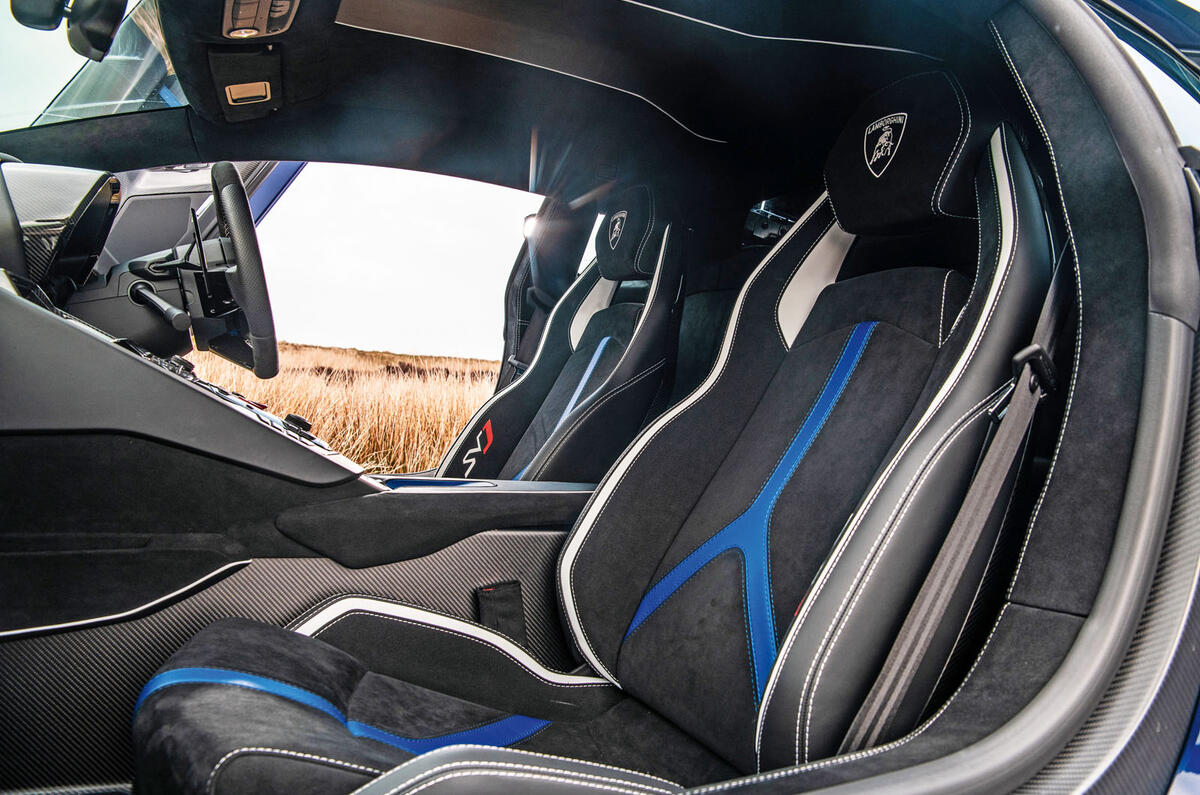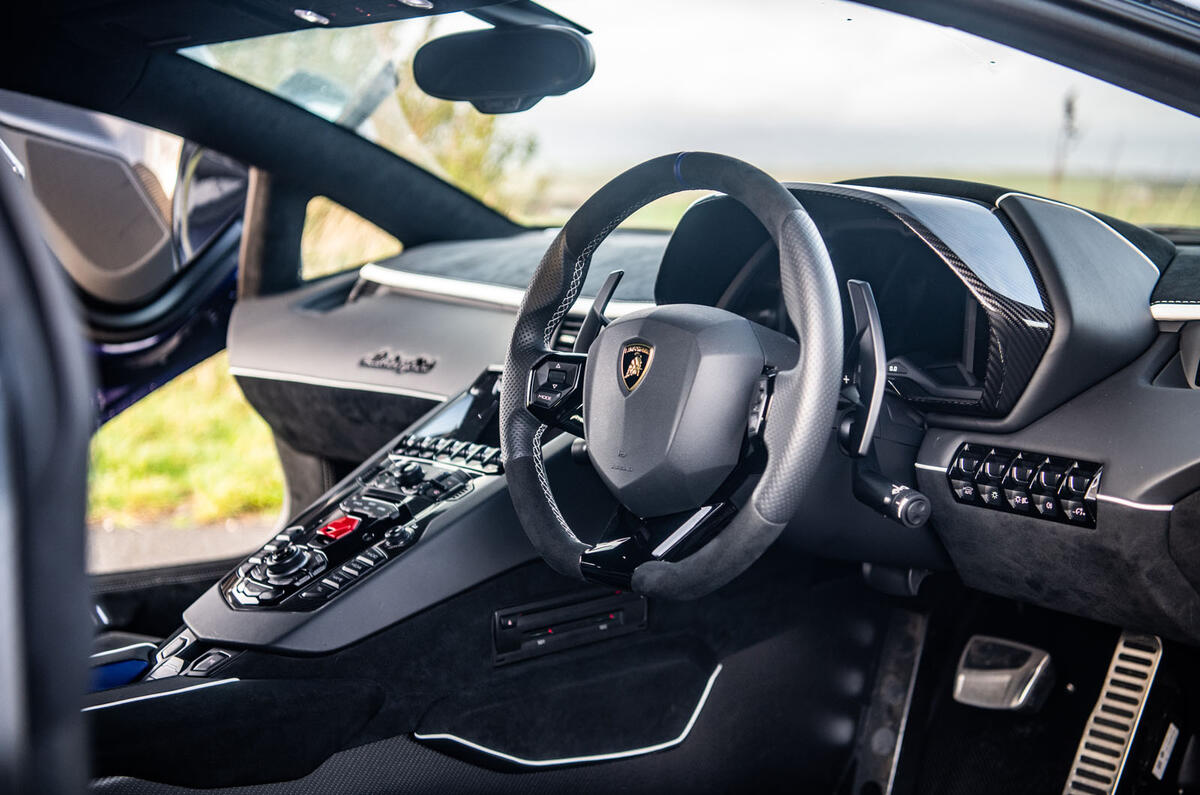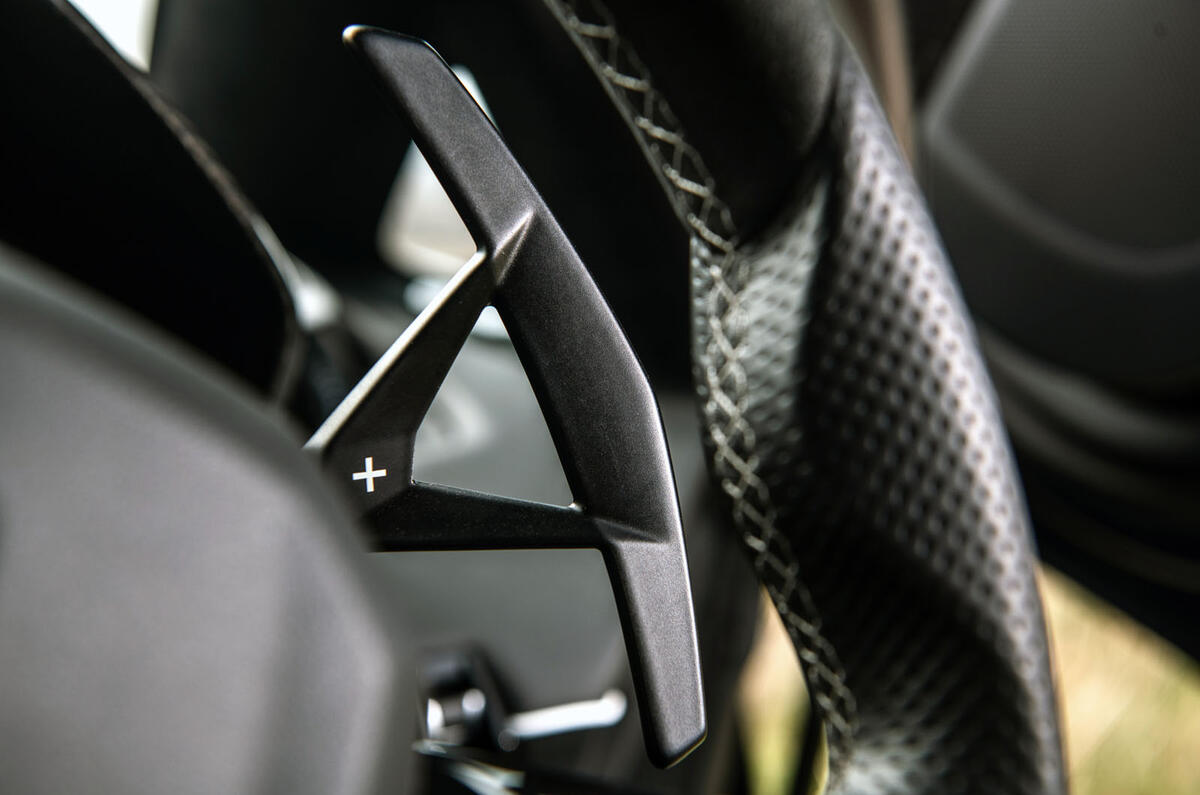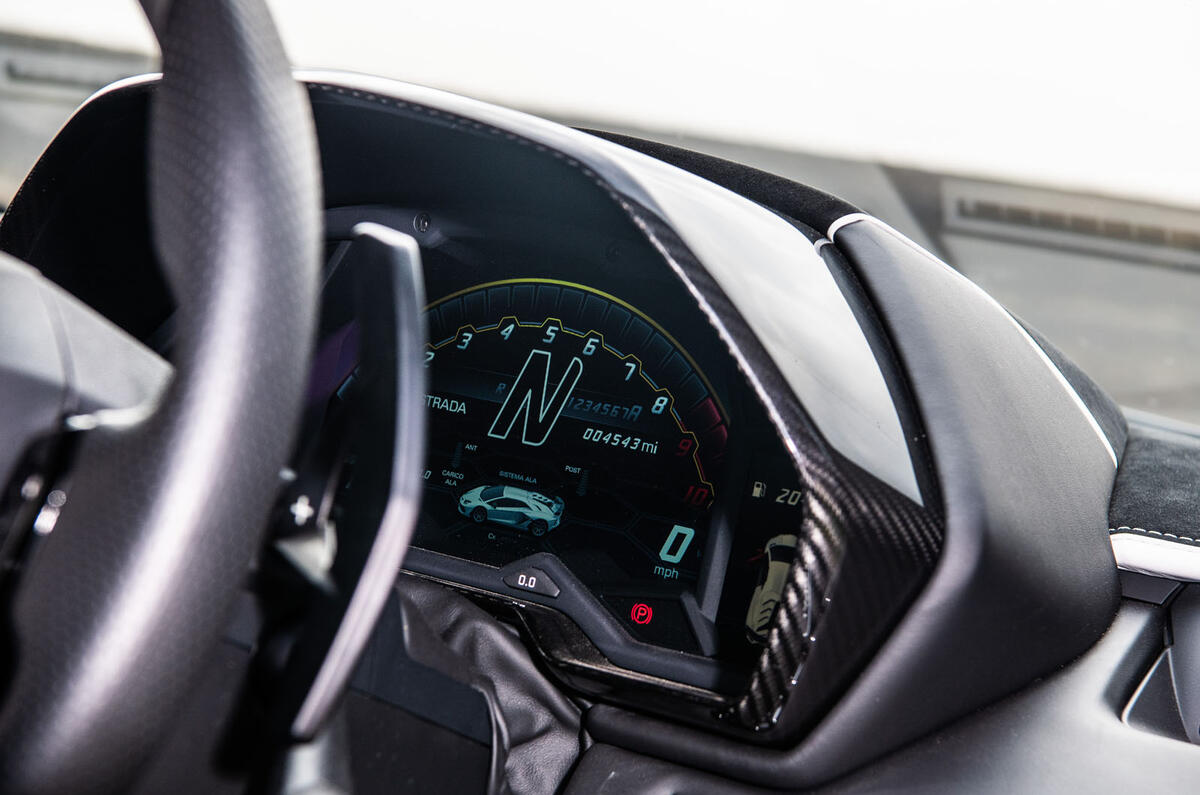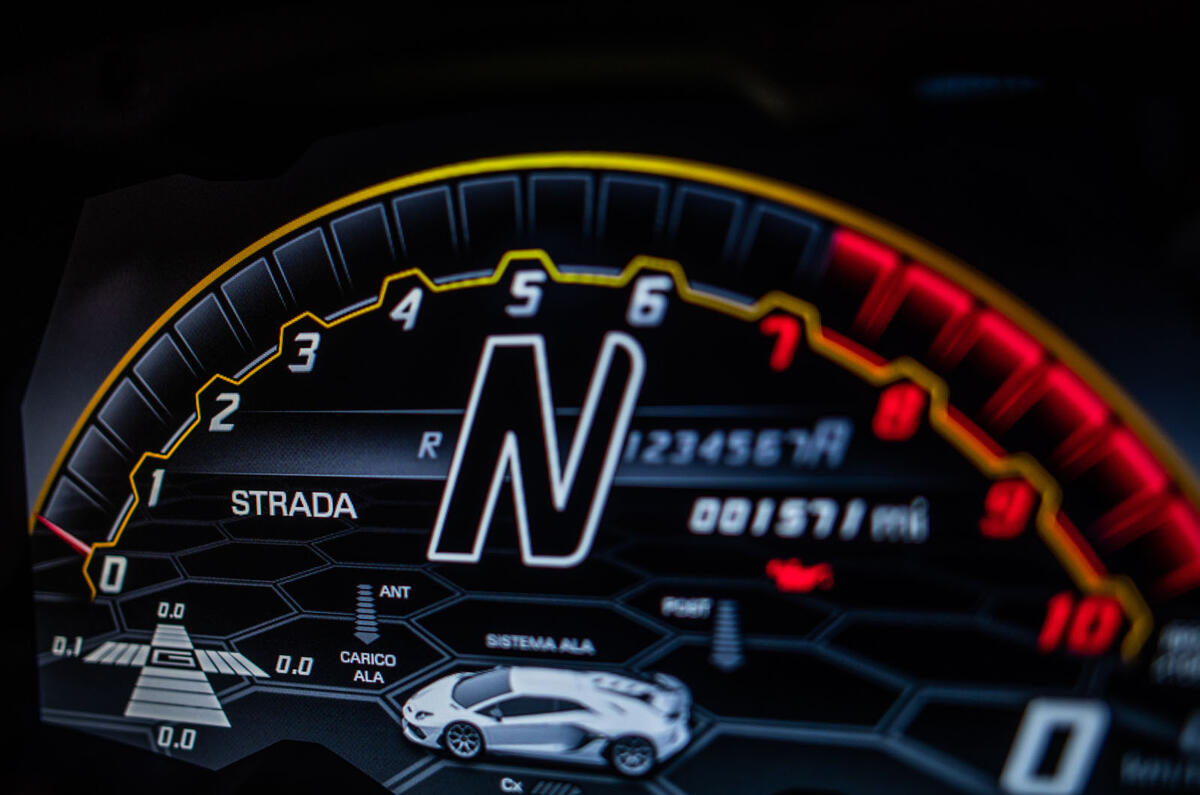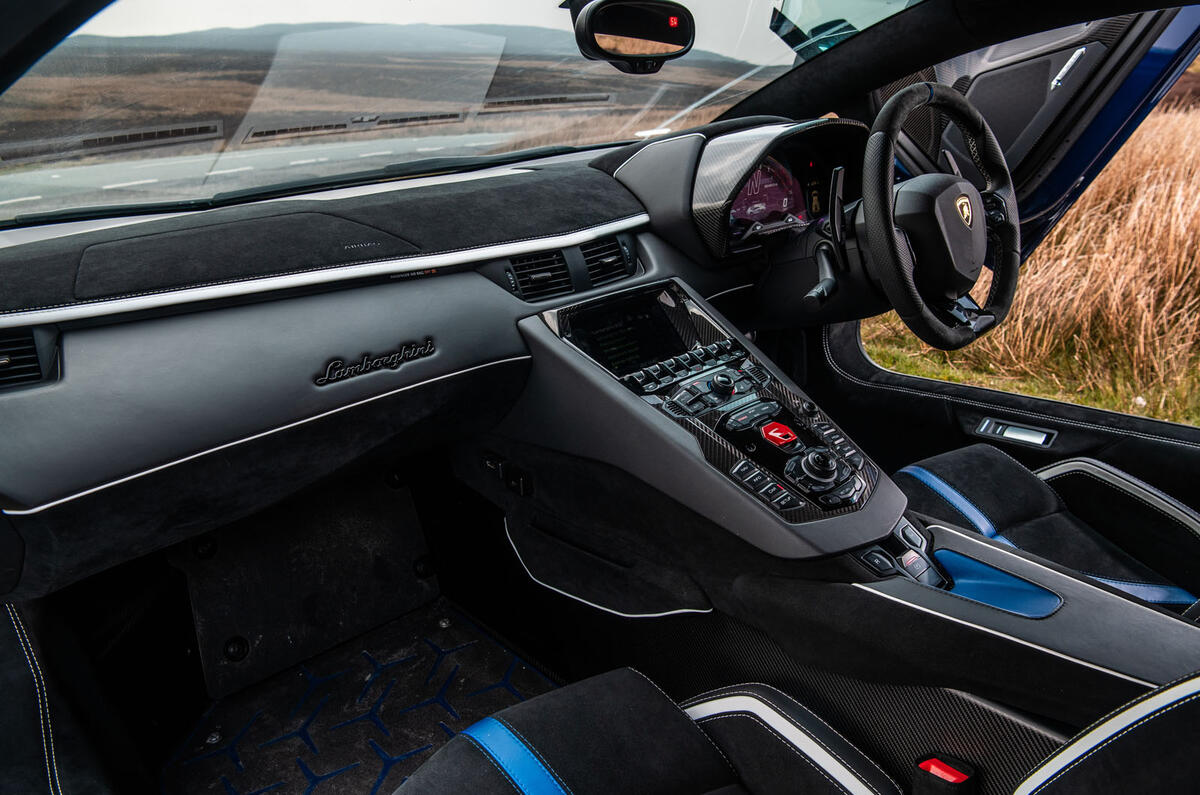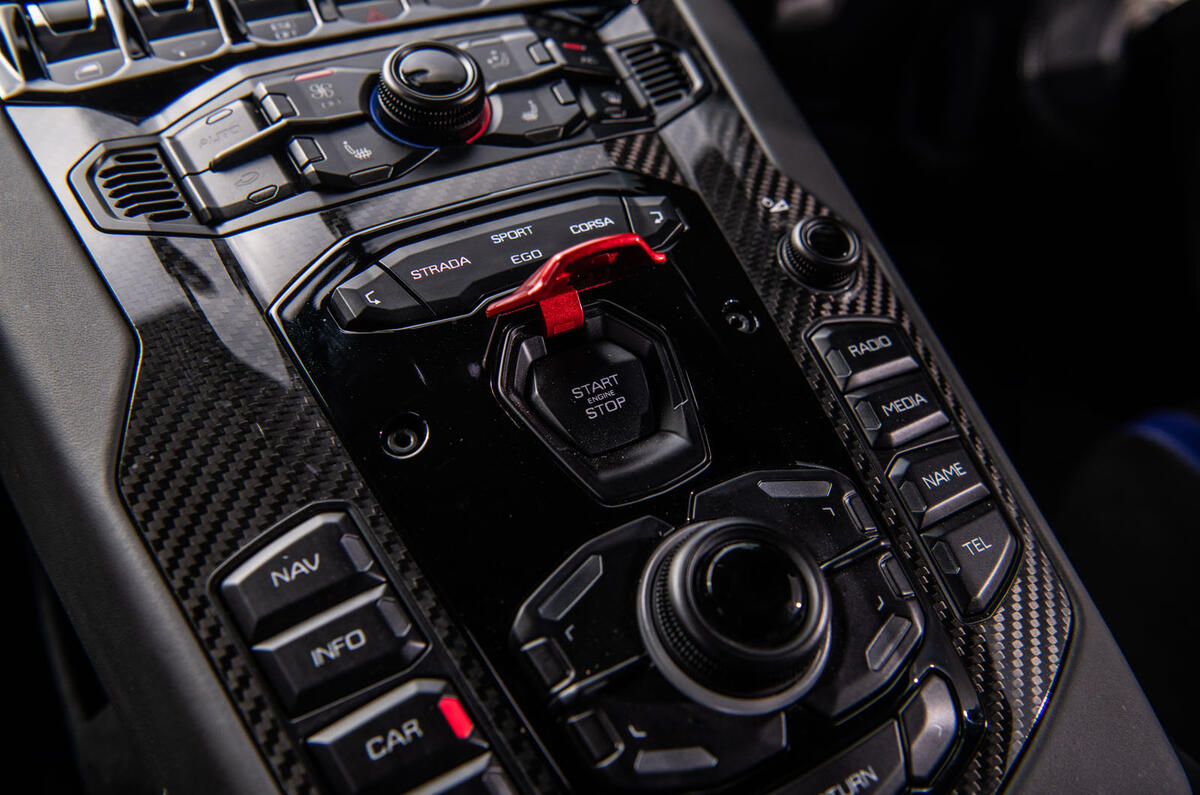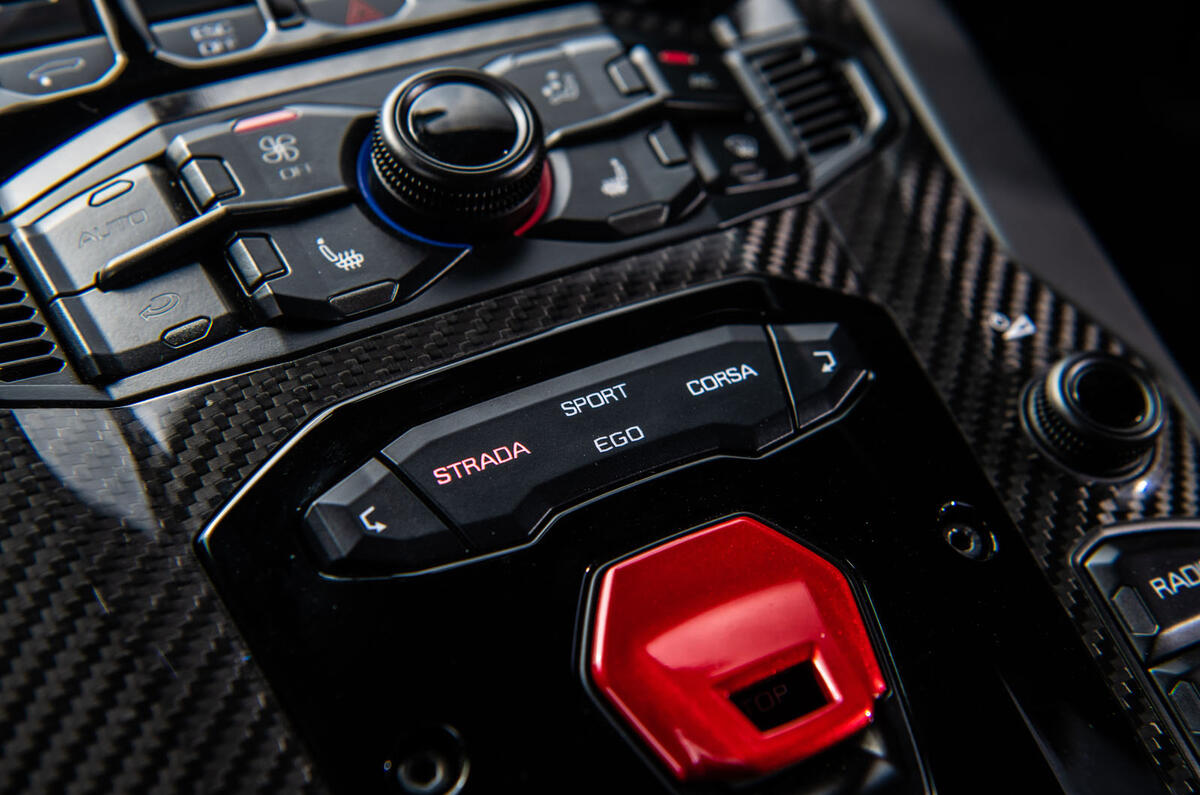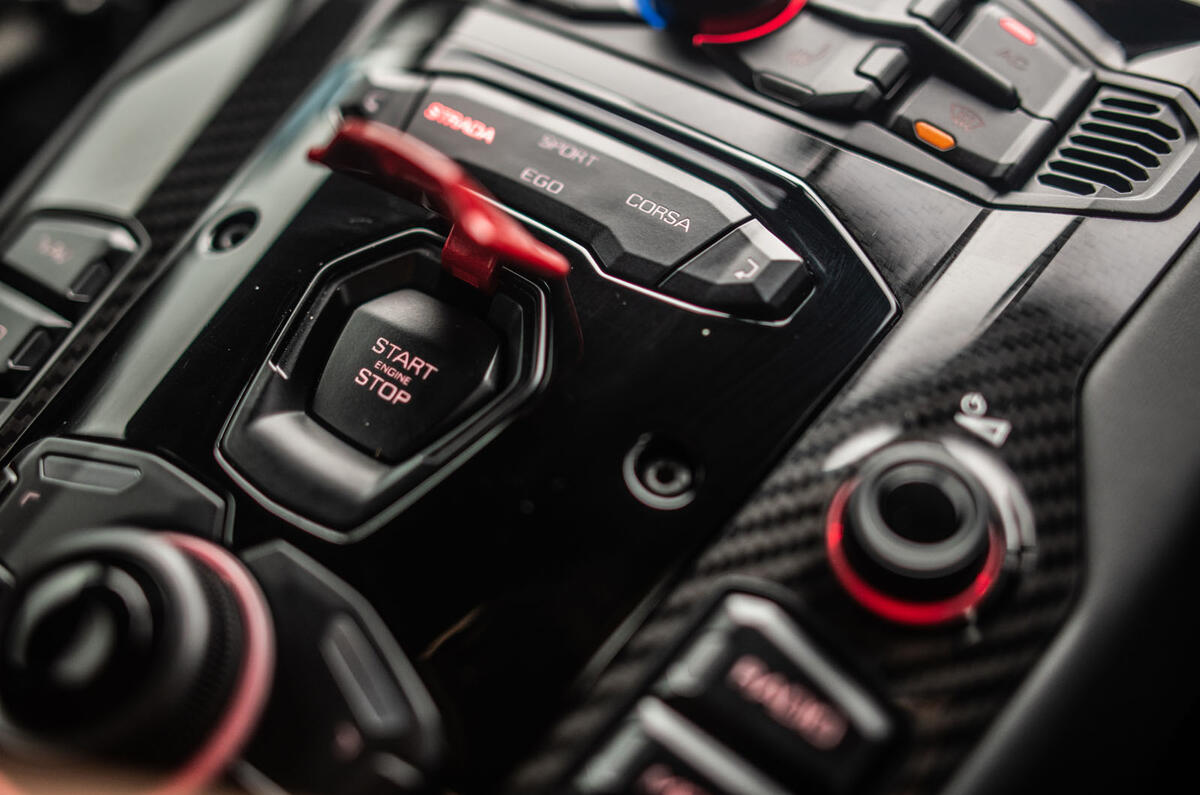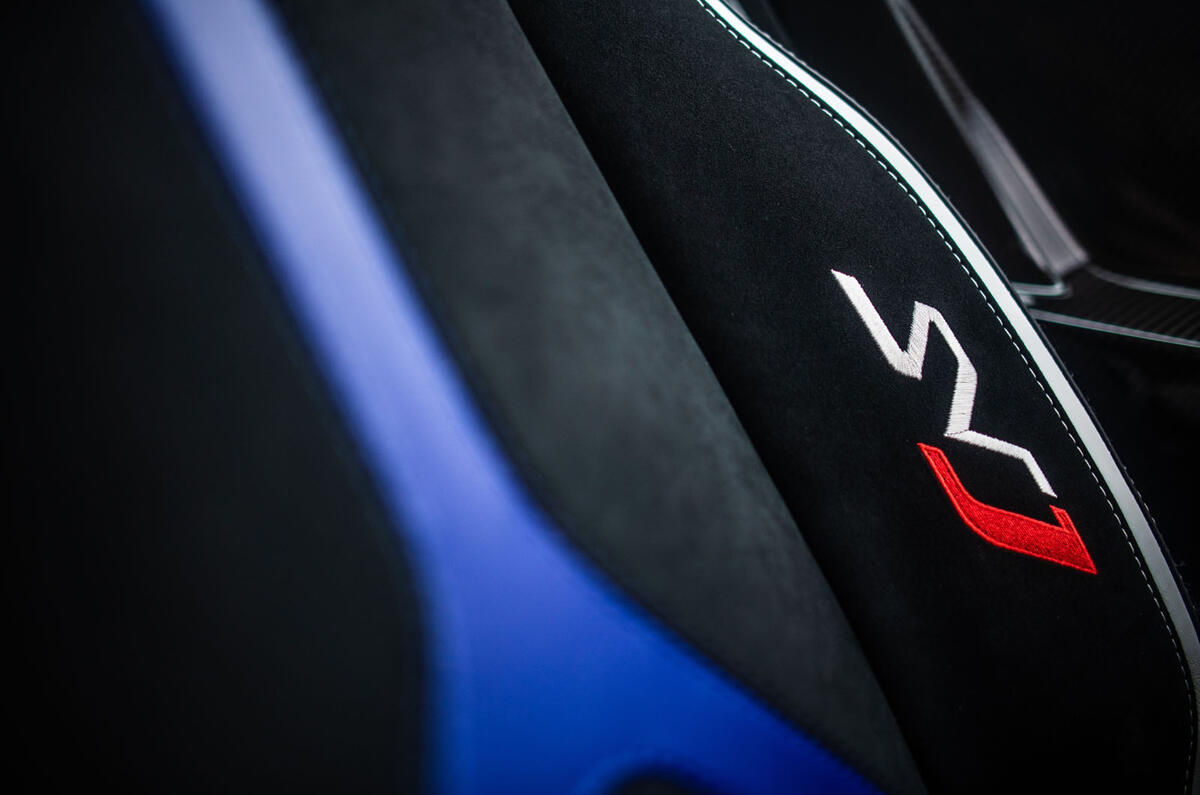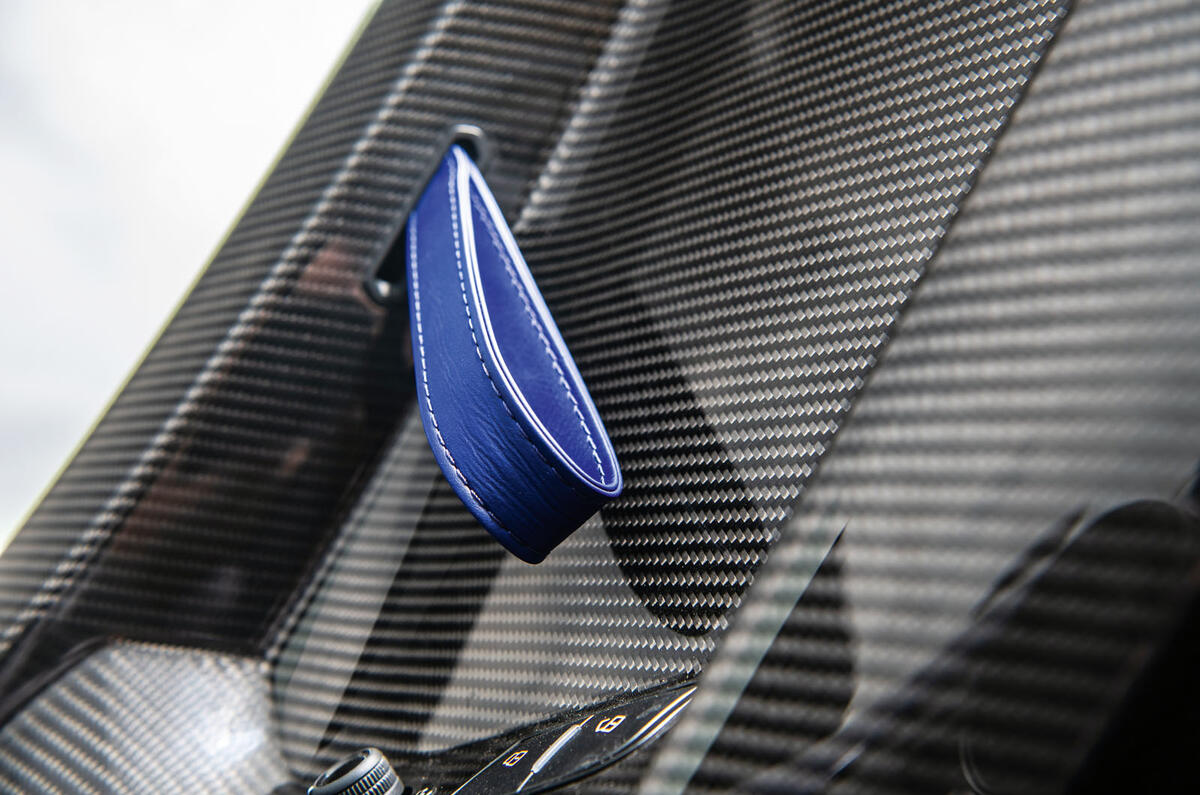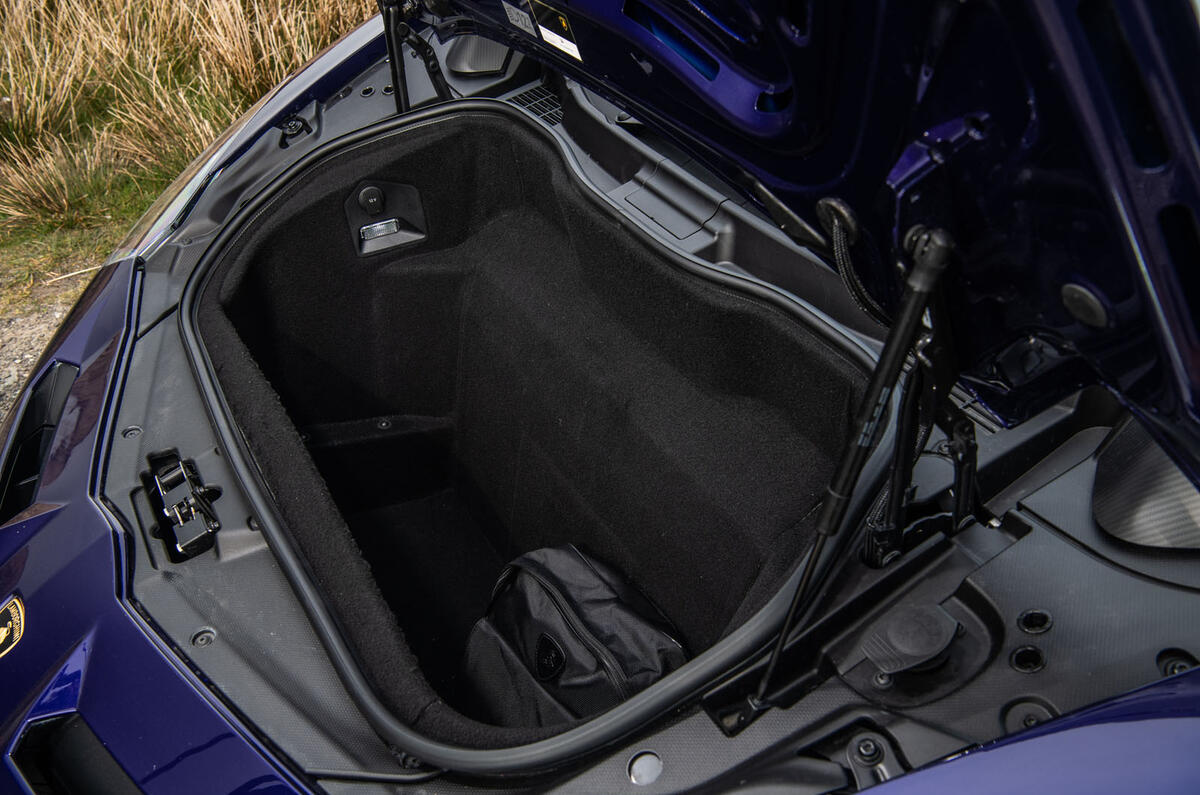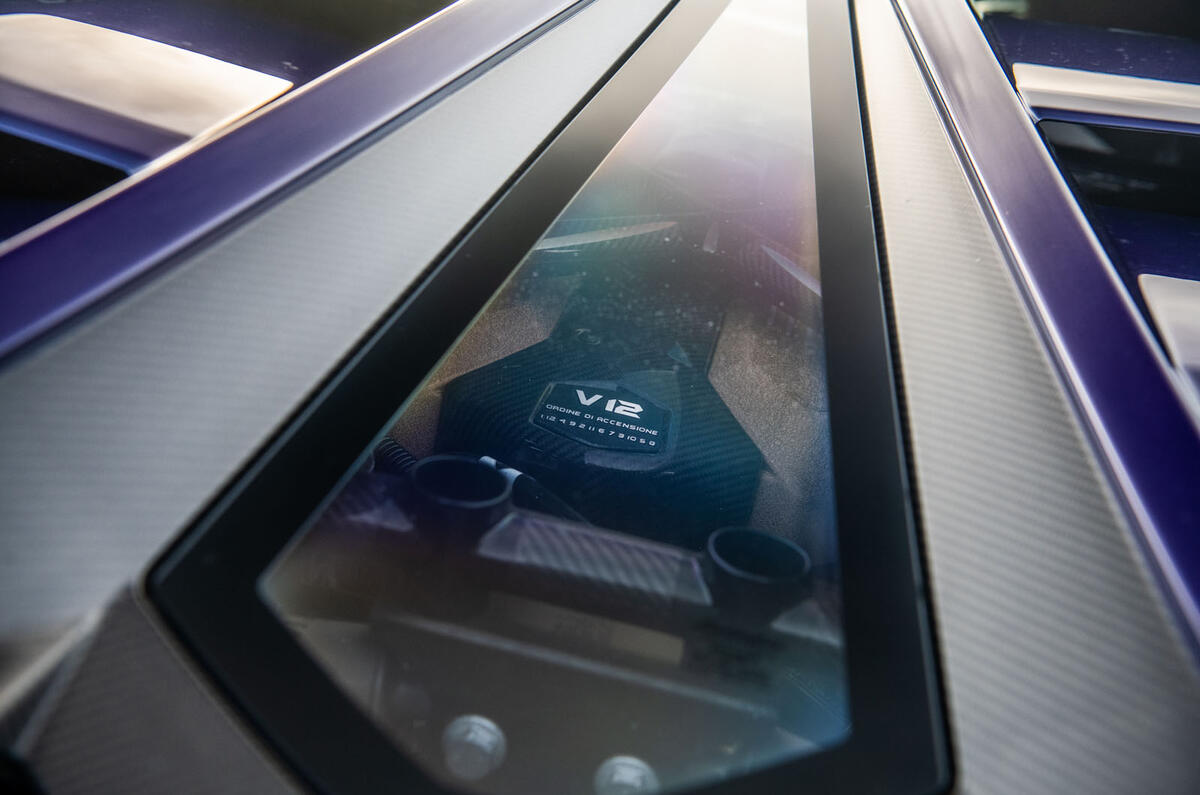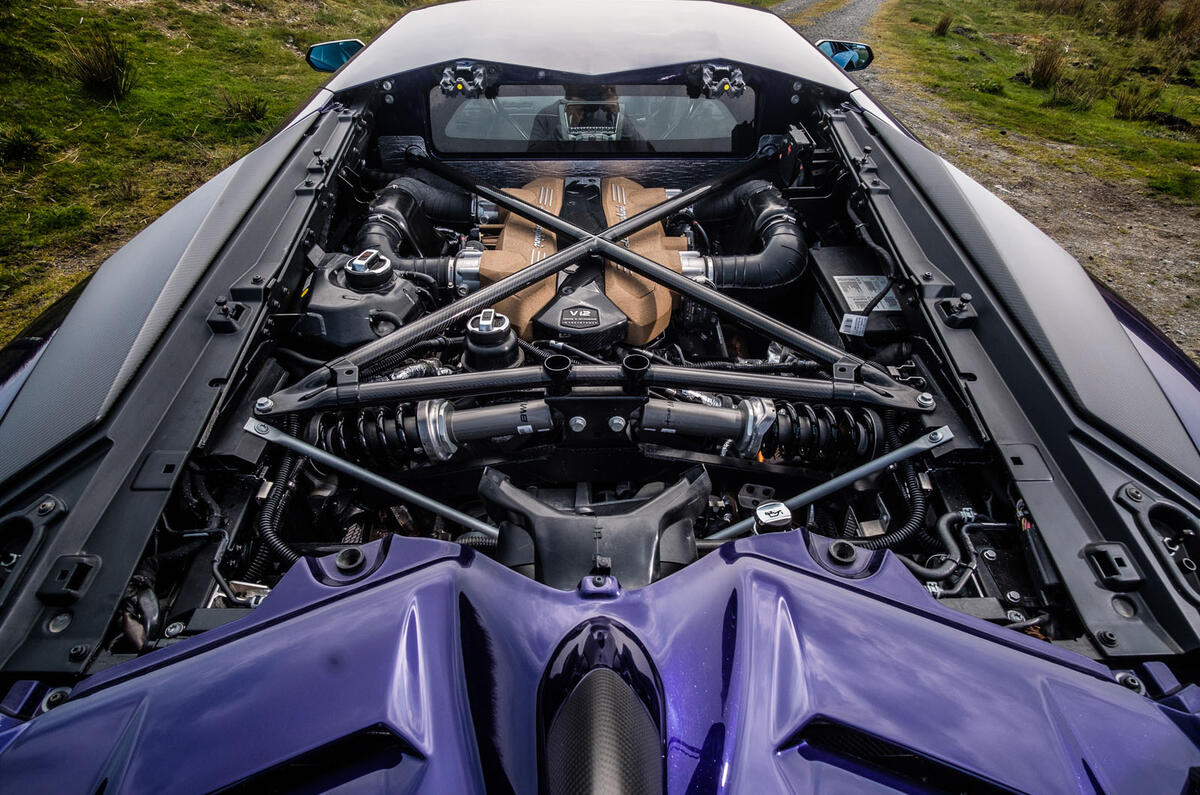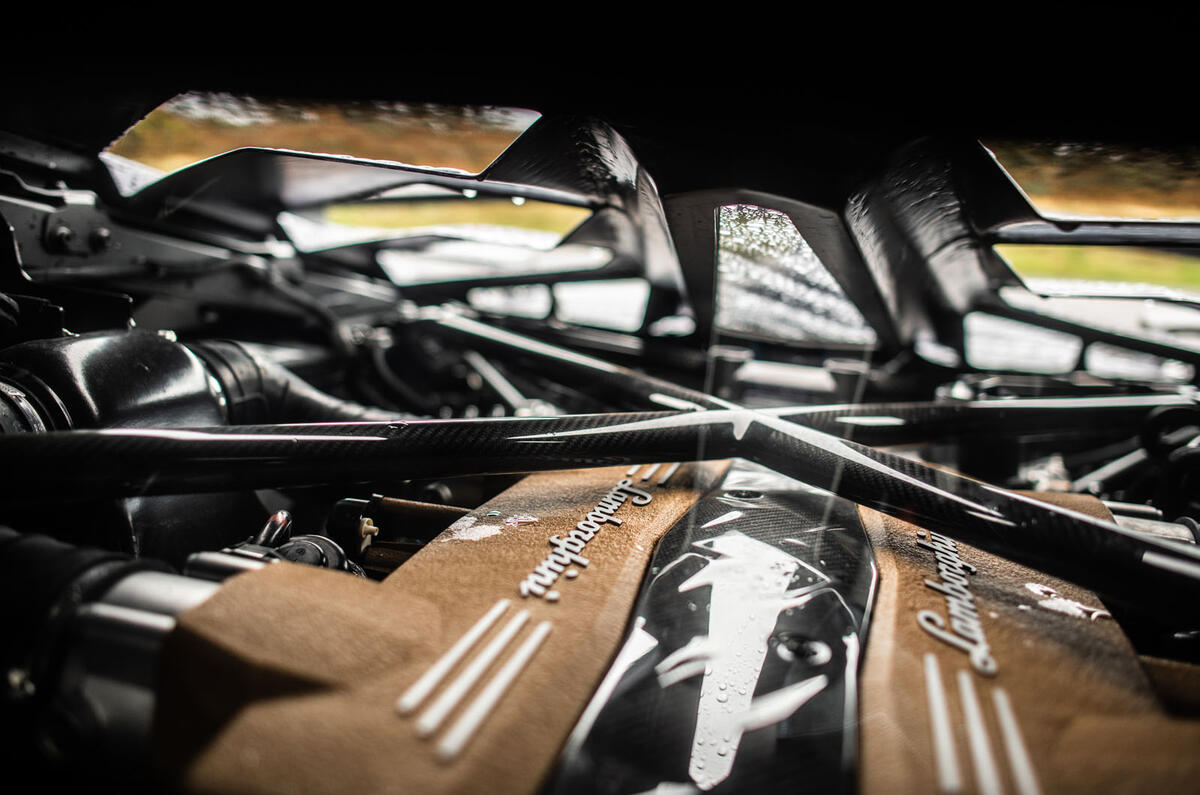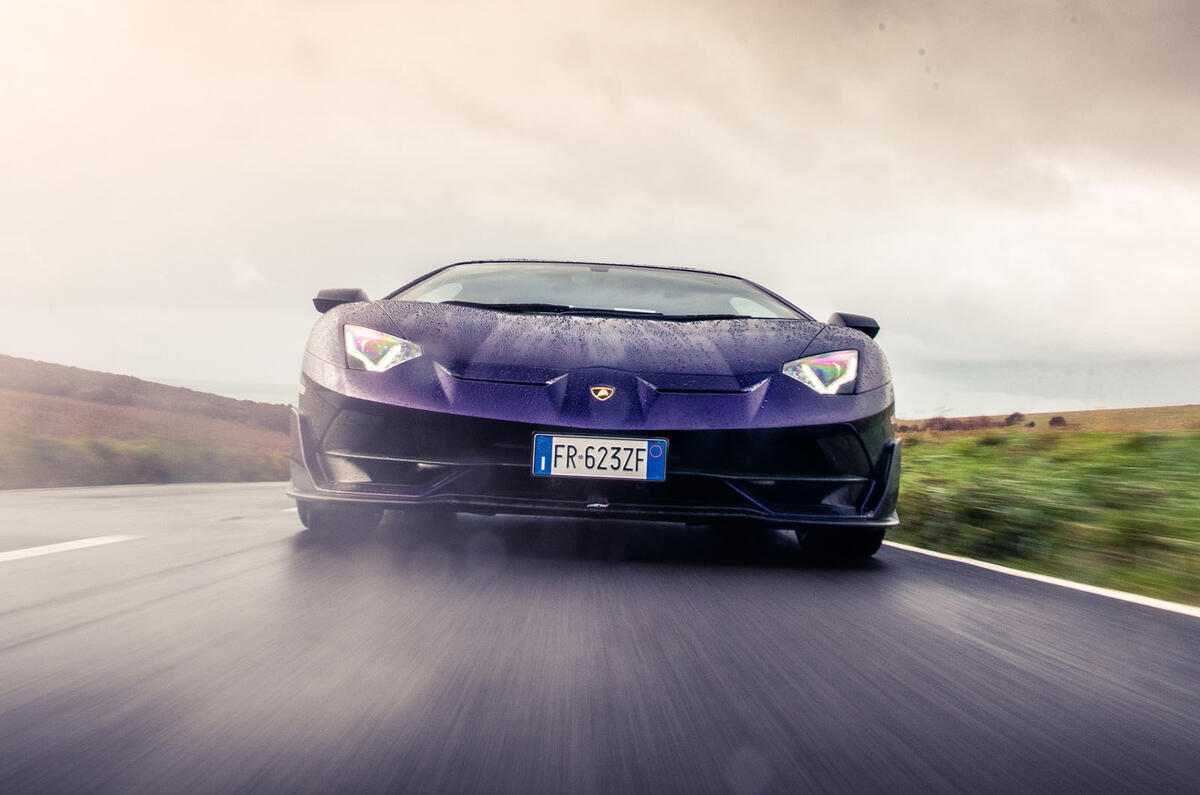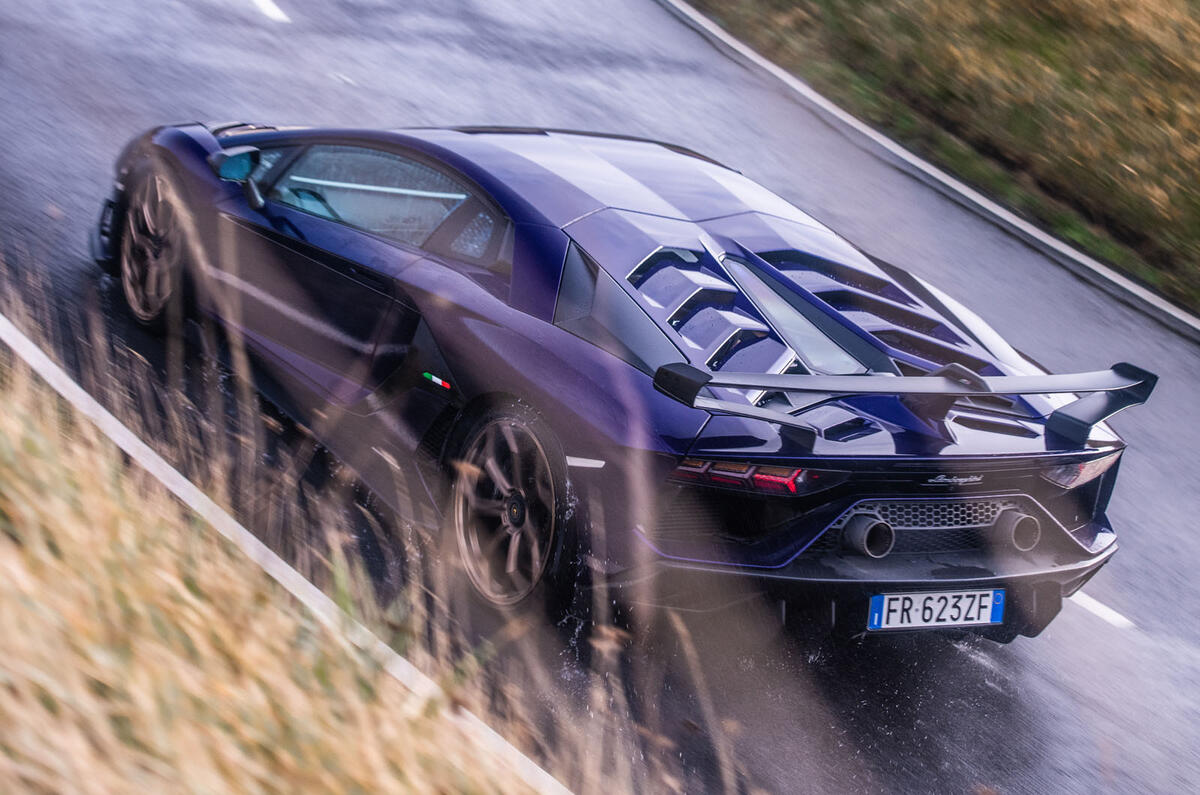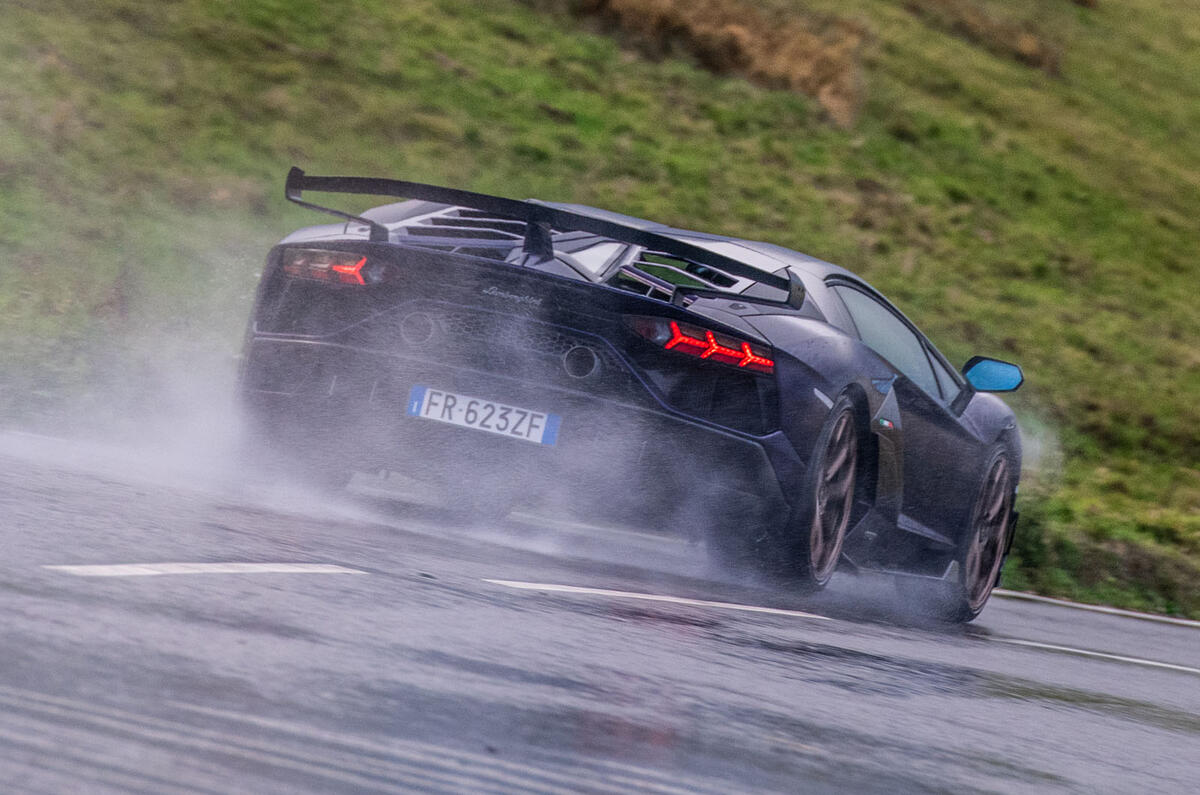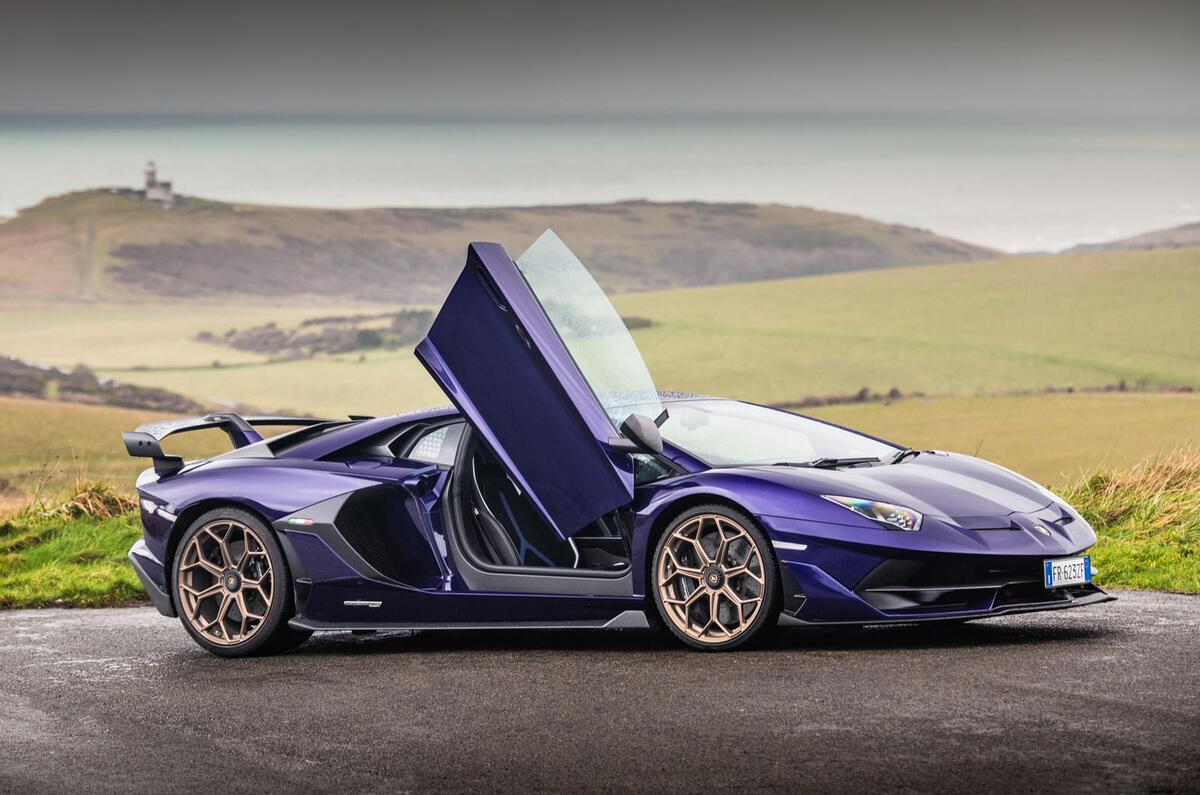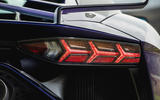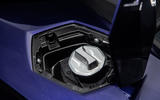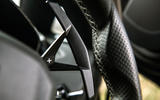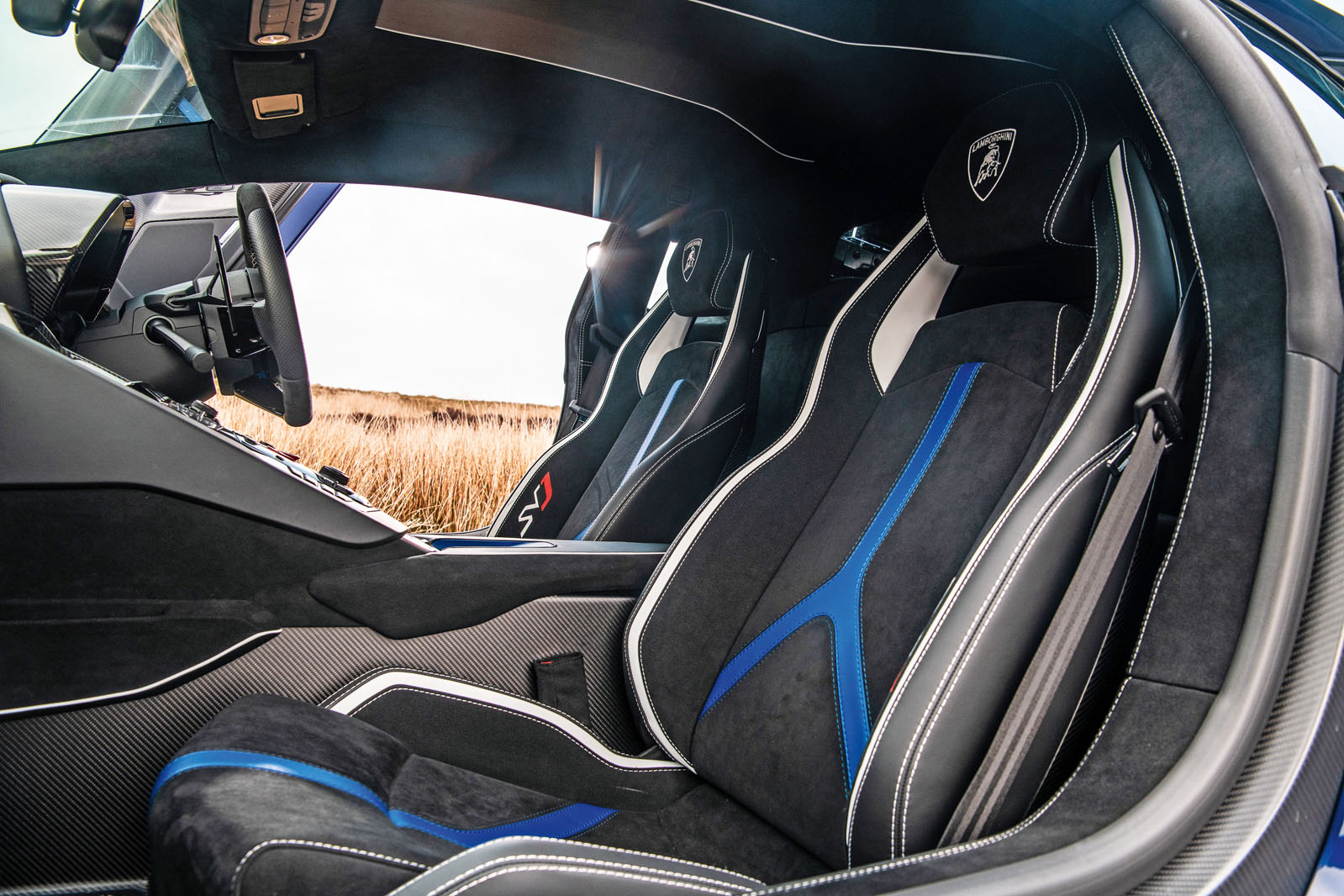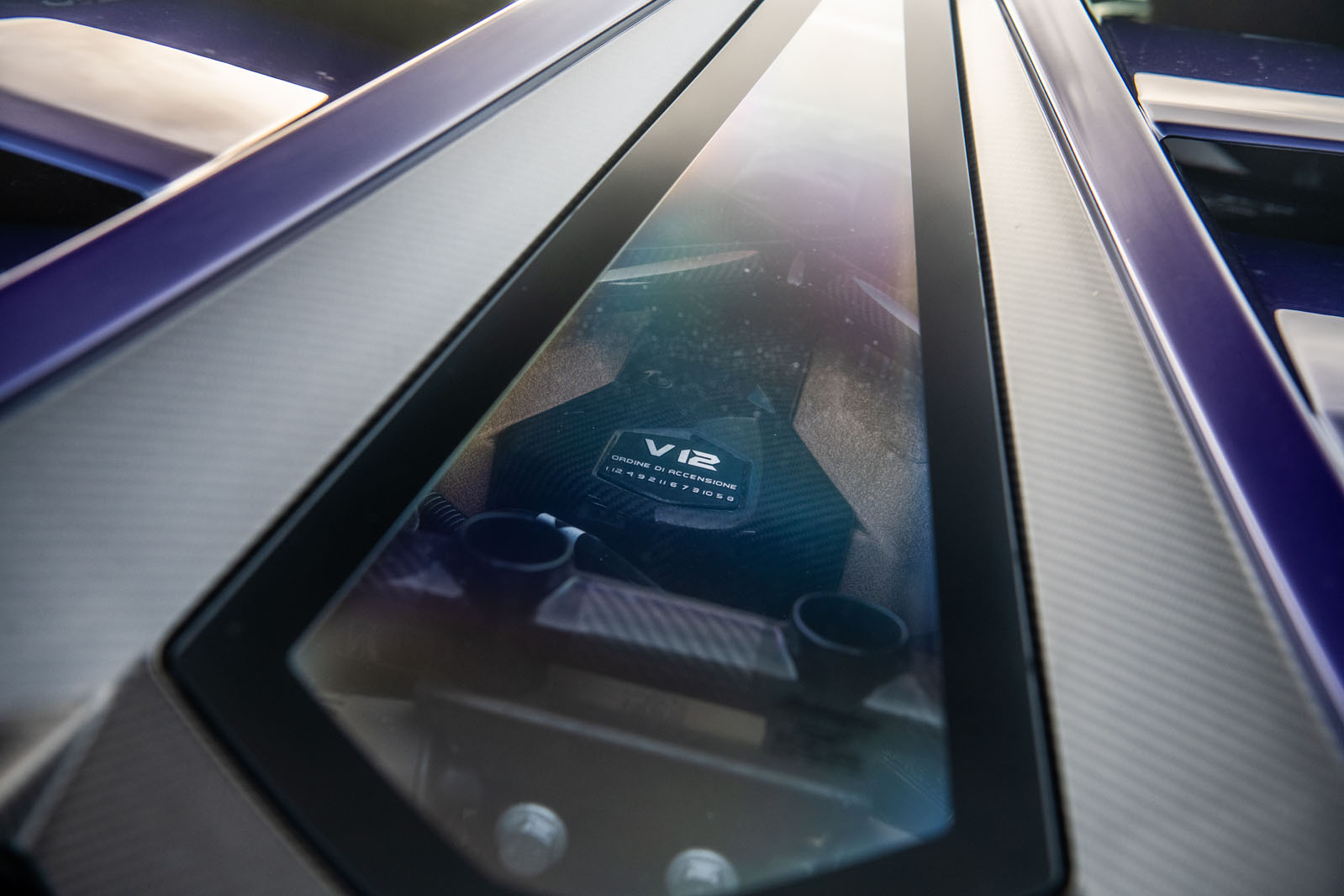Should you never have the opportunity to slide aboard an SVJ, you can simulate the procedure by placing a child’s booster seat underneath your kitchen table. The roofline of this car is extraordinarily low – 60mm lower than a McLaren 720S – and the carbonfibre tub demands the seats are set deep within the broad footprint.
Considering how roomy and approachable a big-bore supercar like the 720S has been made to feel, it’s almost as though Lamborghini has wilfully crafted an ambience that is dark and intimidating.
Which, of course, it probably has. From within, the SVJ oozes drama. It is defined by its outlandish personality and is nothing if not single-minded: there are tight pouches flanking the broad, raised ‘transmission’ tunnel, but these hold little more than a passport and, elsewhere there is no dedicated stowage – not even a glovebox.
You might squeeze a couple of soft-shell jackets behind our car’s fully electric, heated seats, but the only realistic option is to use the awkwardly narrow cavity beneath the bonnet, which can barely accommodate a pair of full-face helmets. Even the 488 Pista, with its theatrical bonnet scoop, does better in this regard.
The cabin itself is little changed from previous iterations of the Aventador, albeit with more Alcantara and vast slabs of glossy carbonfibre for the door cards replete with leather pulls. There is good adjustability in the steering column and plenty of room for busy elbows, though head room is unforgivably poor and if the seats slid closer to the rear bulkhead, it would benefit taller drivers considerably.
While the Huracán has now graduated to a sizeable touchscreen display mounted on the transmission tunnel, the Aventador persists with the same meagre 7in readout it first launched with in 2011. That and the MMI switchgear are still clearly pilfered from the Audi parts bin of the time. The graphics are mediocre by today’s standards and the set-up desperately needs a clean-sheet redesign. Sat-nav and Apple CarPlay are available as a no-cost option, however, and allow you to bypass the unintuitive standard menus.
The TFT digital dashboard is larger and more impressive, if less sophisticated than what Porsche now provides. The readout alters its skin depending on driving mode, culminating in Corsa, where the tachometer is theatrically spread almost the entire width of the binnacle. As in the Huracán Performante, you’re also kept abreast of what the ALA system is doing, by way of a small graphic.
Lamborghini offers its Sensonum premium sound system (£3156), which performs reasonably well given the lack of cabin insulation. There is, however, an even better audio device that comes as standard, which we think you’ll prefer.
Much of the switchgear is the same found in Audi models two or more generations since departed, and so the central touchscreen from the recently released Huracán Evo cannot come soon enough. Certainly, the Aventador is feeling its age, both in terms of hardware and ergonomics.
And yet all the above pales to insignificance relative to the driver’s inability to see out of the SVJ. With such an elaborate engine cover, the effective rear blindspot encompasses anything behind the driver’s ears (mind you, Lamborghini didn’t even bother to fit a rear-view mirror to the Diablo Jota). The fiercely raked A-pillars might as well be Roman columns, and the windscreen is so low, you’ll struggle to observe traffic lights at anything closer than 20 feet. That said, while it can be tough to acclimatise to all this, the rewards for sticking it out are simply spectacular.





